Identify the main skills, knowledge and calls-to-action you want participants to get out of your program, then build an evaluation based on those program goals.
- What do you want participants to know or be able to do?
- What actions do you hope they take?
For example, “By the end of the program, students will know how to request a credit report, dispute errors, and monitor their own credit.”
The clearer the program goals, the easier it is to measure if the program is succeeding.
When to Evaluate
The most common times to conduct an evaluation are:
- Before the program begins (pre-program evaluation)
- Immediately after the program ends (post-program evaluation)
- A while after the program ends (long-term evaluation)
1. Choose the right evaluation.
Short program (two hours or less)
Use a post-program evaluation to measure immediate results and reactions. Ask questions about the content (skills, information) as well as about participants’ satisfaction with the program and attitudes toward the topic.
Long program (day-long workshop)
A whole day session is long enough to conduct a pre-program and post-program evaluation. This makes it possible to compare students’ knowledge and attitudes before and after the program to document changes.
Conduct surveys anonymously to see changes in the whole class or have students identify themselves to measure individual results.
Multisession program (series of classes or workshops)
A multisession program is long enough to see behavioral changes. Make an evaluation plan that includes pre-, post- and long-term evaluations, including questions about the specific financial behaviors taught in the program. Collect data at all points before, during and after the program to measure changes in student behaviors.
“Train the trainer” program
Normally, teacher trainings are long enough to conduct both pre- and post-program evaluations.
2. Use a template or create a new blank evaluation.

3. Pick questions based on program goals.
Decide which types of questions will get the data you’re after. For example, if you want to know whether students learned a certain skill, ask a knowledge question. To find out whether the program is changing hearts and minds, ask an attitudinal question.
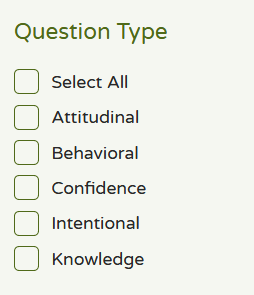 Attitudinal
Attitudinal
Ask about students’ attitudes toward the program and the curriculum.
Behavioral
Ask about participants’ financial behaviors (e.g., saving, investing, borrowing, tracking spending, impulse buying, etc.).
Confidence
Ask about participants’ confidence and ability to carry out money management tasks.
Intentional
Ask about participants’ intentions and readiness to apply financial management practices after the program.
Knowledge
Ask about specific skills and knowledge covered in the program.
4. Decide what information to collect.
Choose to request participants’ names and email addresses when they start the test (or turn this off).
Whenever possible, avoid questions that require personal information such as the participant’s name, mailing address, e-mail, username, password, phone number, account numbers, birthdate, position, title, employer, etc.
If you must collect personal information, keep it confidential and use it only in connection with the evaluation.
5. Add questions from the Question Bank
Select from more than 800 questions in the Question Bank. Filter by question type, age, concept, question format or benchmark surveys.
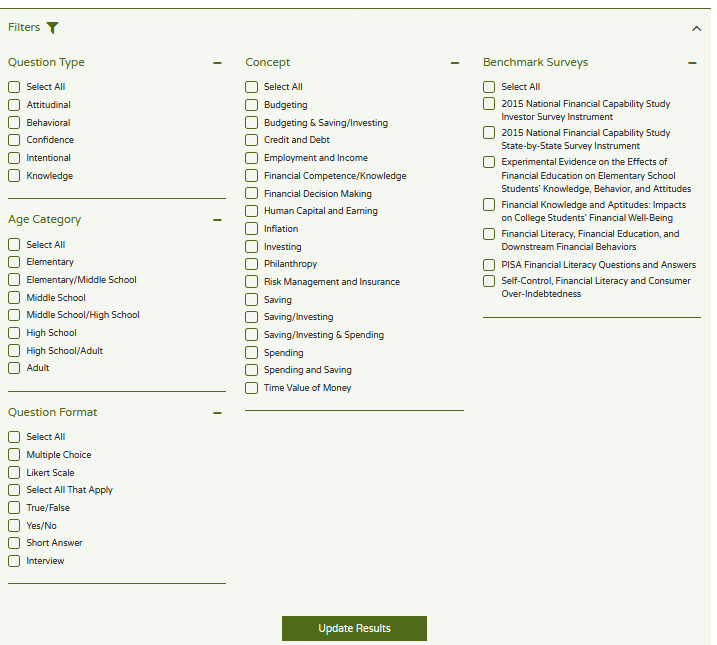
Or write you own questions
Add custom questions to the evaluation based on your curriculum. Choose the appropriate question format for the type of information you seek. A Likert scale is usually a five- to seven-point scale with options ranging from one extreme to another, such as “Strongly Agree” to “Strongly Disagree.”
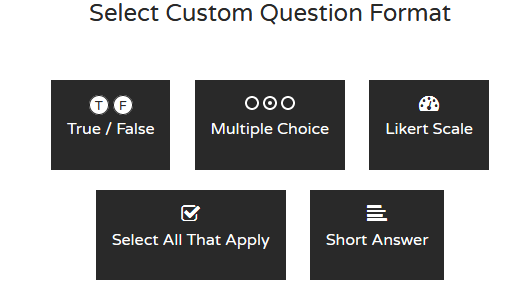
6. Write intro and closing.
Customize the intro and closing for your audience. This is a note directly to your participants, so include anything that would be relevant to them as they complete the evaluation.
7. Conduct evaluation
Email evaluation
Click ‘Get URL’ and copy the link (URL). Send the URL to learners to complete the online assessment. (They do not need to create an account to take the online assessment.)

Print or download evaluation
Print the evaluation to hand out to learners if they are not taking it online.
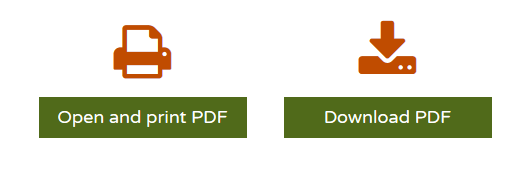
8. View and analyze results.
After participants complete the evaluation, view results in a web format or download more detailed results in an Excel spreadsheet.
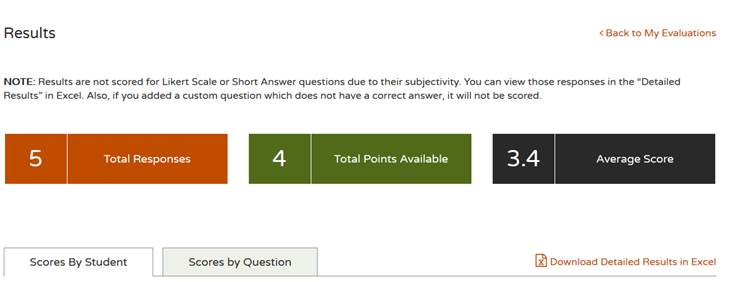
9. Save and store evaluation.
Participant responses will be collected and stored in your Toolkit account. View prior evaluations under the “My Evaluations” tab.

10. Share results with stakeholders.
The stakeholders include anyone with a “stake” in the ultimate success or failure of the program.
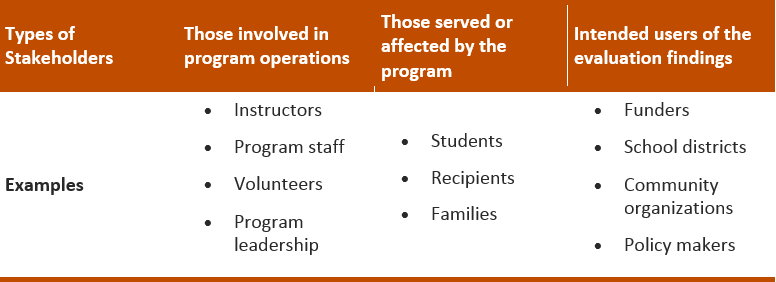
If possible, get agreement about program goals from as many stakeholders as possible before the program begins.
At the end of the program, partners and stakeholders like to share credit for the program and be informed about successes.
Start Your Evaluation
Ready to get started? Register or log in with your free account to begin evaluating your program.